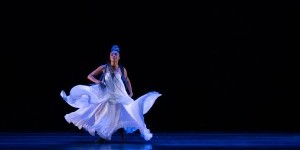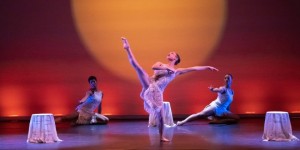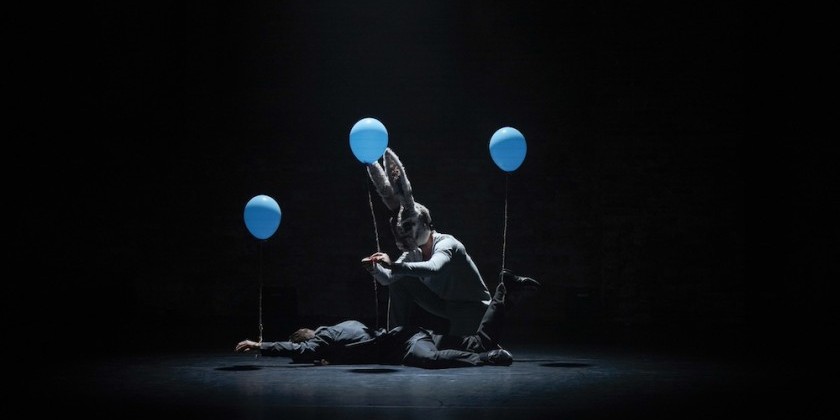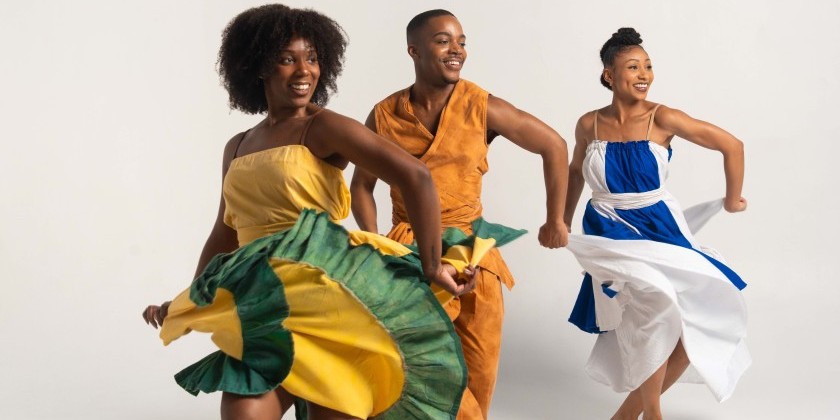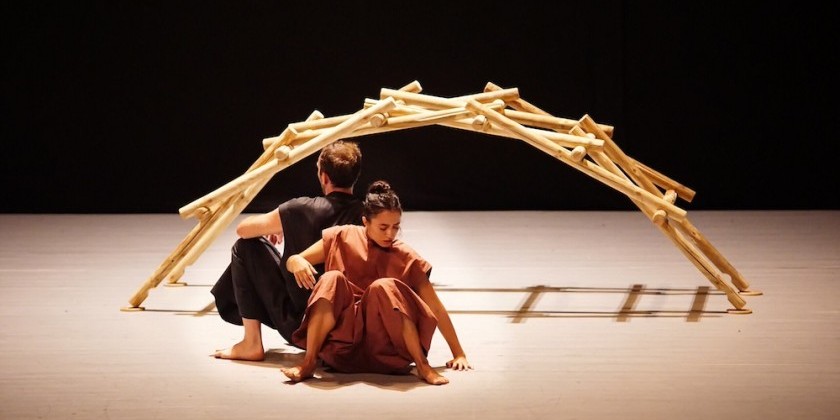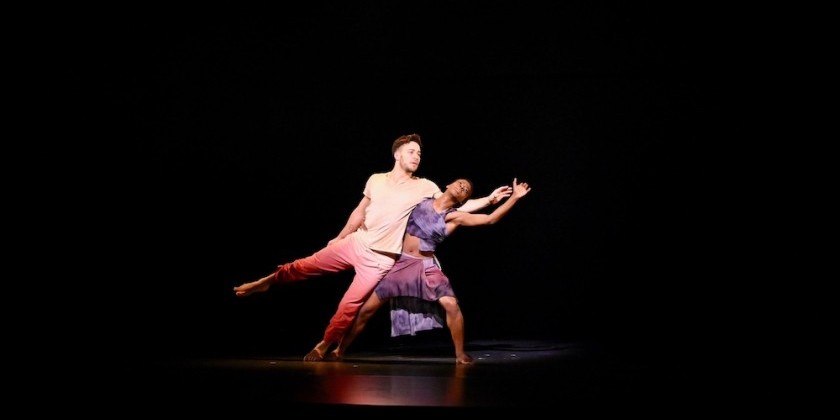DANCING WITH HISTORY IN SPACETIME: Martha Graham Dance Company at The Joyce Theater and Stephen Petronio Company at Skirball Center
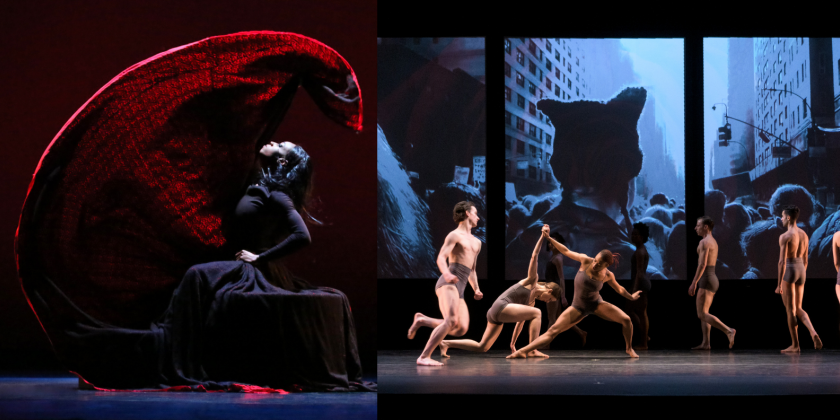
On Wednesday, April 10th, 2019 — the day after the Martha Graham Dance Company gala performance at The Joyce and the day before the Stephen Petronio Company opened at Skirball Center — a group of 200 scientists, using high-powered telescopes stationed around our earth, captured the first image ever of a black hole. This black hole, with a mass billions times more than our sun, lives in Messier 87, a neighboring galaxy of our own Milky Way.
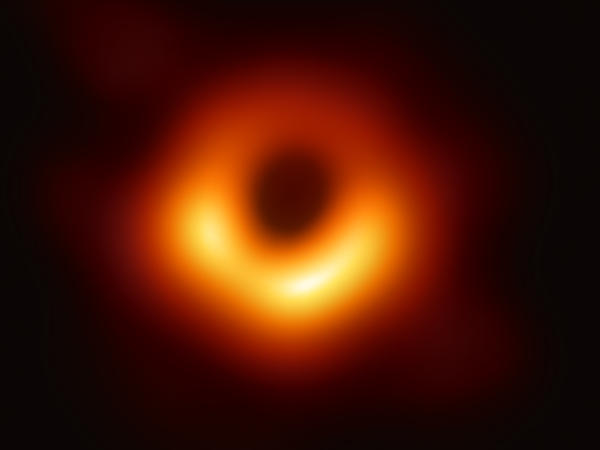
The first-ever image of a black hole was released Wednesday April 10, 2019 by a consortium of researchers, showing the "black hole at the center of galaxy M87, outlined by emission from hot gas swirling around it under the influence of strong gravity near its event horizon." EVENT HORIZON TELESCOPE COLLABORATION ET AL
When we look at the miraculous intergalactic photograph, what we are seeing is 55 million light years away. In other words, today, when we look at and learn from the past, we are speaking of history not as in yesterday, last Christmas, or the 1960s, but as in before you and I were born or dreamt of — before human beings walked the earth.
Wrap your head around that for a moment.
Shep Doeleman, astronomer and the leader of the quest to photograph the black hole said, “We have seen what we thought unseeable,” which got me to thinking, “Isn’t this what dance artists do, help us to see what we think unseeable?
Working and reworking their data, toiling away in sweaty teams, believing in, but not always knowing exactly what it is they’re going to find, dancers communicate. When at its best (and sometimes it takes many experiments to get there. Investigation and failure are necessary partners), we ALL discover.
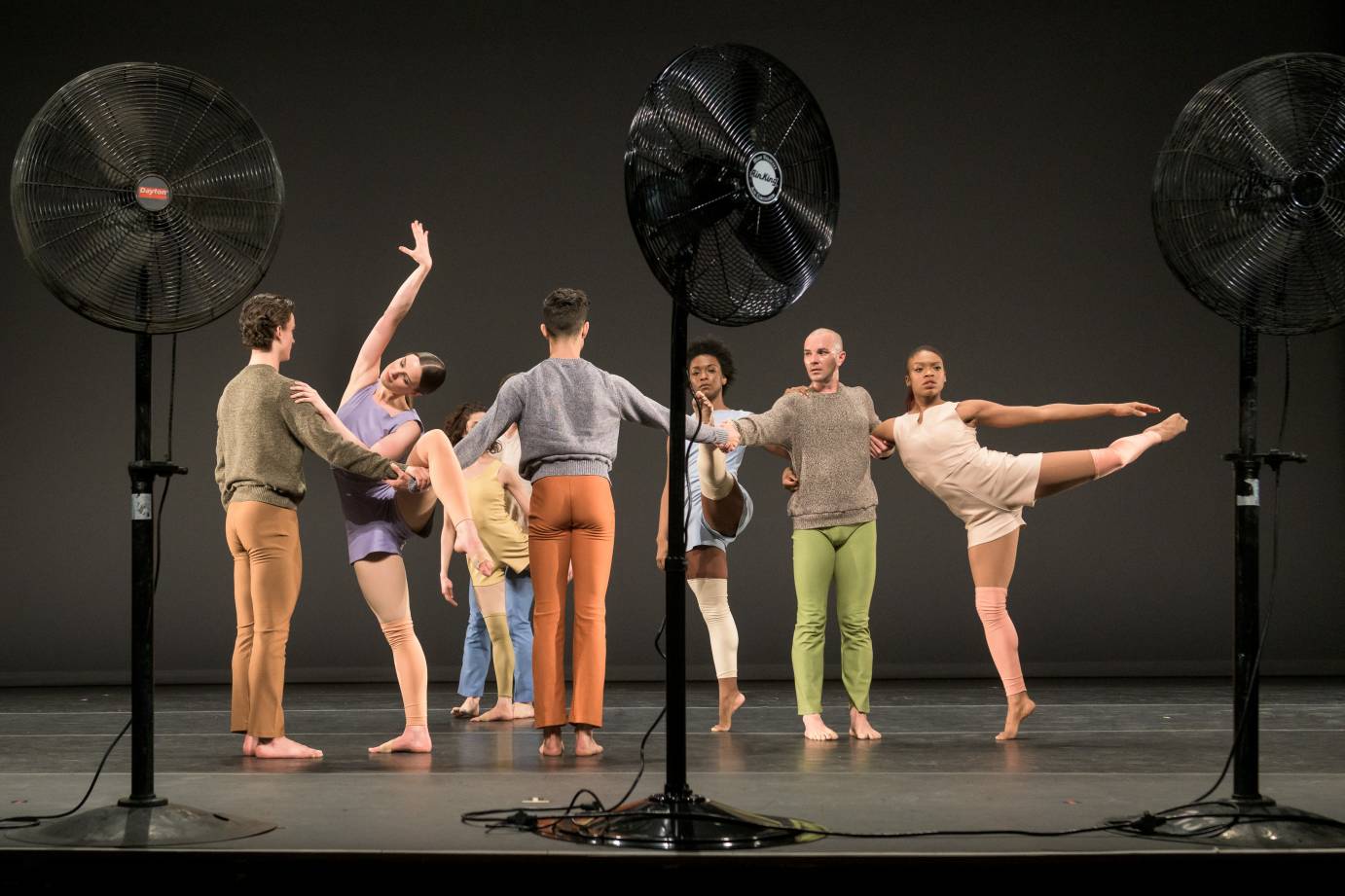
STEPHEN PETRONIO COMPANY AT SKIRBALL CENTER APRIL 11-13th, 2019
On Thursday, April 11th, on planet Earth, in North America’s New York City, Stephen Petronio, an innovative thinker, experimenter, and collaborator, continued to explore his artistic lineage through an initiative he calls Bloodlines. With rigor and sensitivity, Petronio’s company physicalizes past dance works by post-modern masters.
We can read about these dances, or perhaps see them in films. We might talk to people who danced in them or choreographed them (if they are still alive). Historians, critics, and philosophers can add dimensions to our understanding. Still nothing beats the thrill of time traveling with artists who are equipped and ready to take us on the journey. Dance was meant to be danced, baby.
TREAD (1970) choreographed by Merce Cunningham
Merce Cunningham’s Tread takes place behind a line of large standing fans. That’s right. The curtain opens, and these humongous things sorta block our view. How fun is that? Cunningham, a choreographic genius responsible for changing the way we understand movement in space and time, upends our perspective right at the bat. Entering the work from behind the whirring oscillations disrupts our natural inclination to look center stage for a main event.
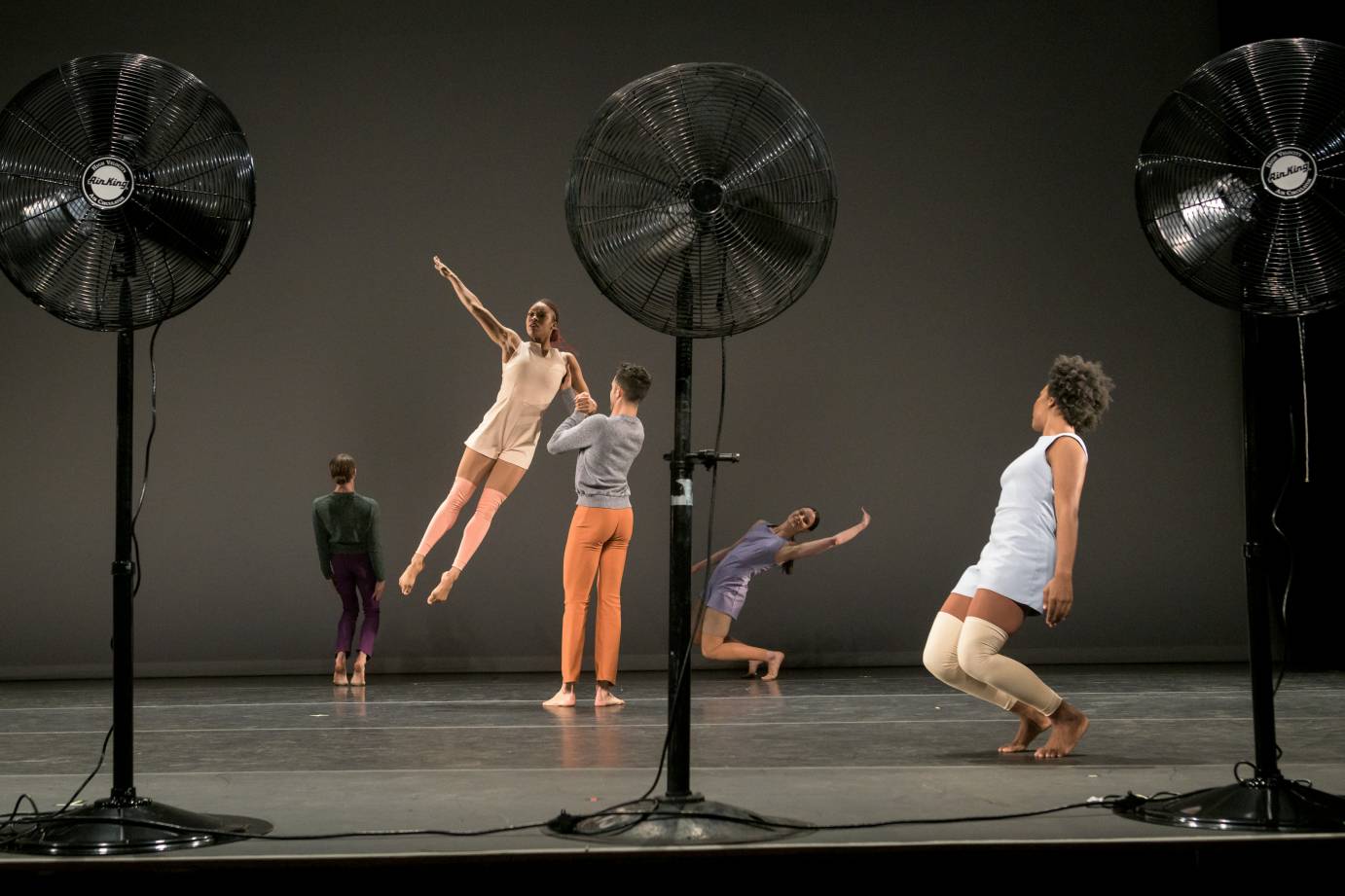
Oddly the fans open up our focus. Instead of dance presented, like a cake on a platter, we can peek into a universe that dances (the best kind). In this case, the universe looks a lot like a dance studio on a warm spring day. Form, space, and time play in their bubbly physical laboratory. We follow the effervescent and exquisite bodies of the youthful people in their colorful pastel rehearsal gear as they fall, rise, jump, or just sit on the floor watching one another. They aren’t performing for us. They are in space and time doing what dancers do, and Merce Cunningham, living through Petronio’s incredible dancers, reminds us what a joyful experience that can be.
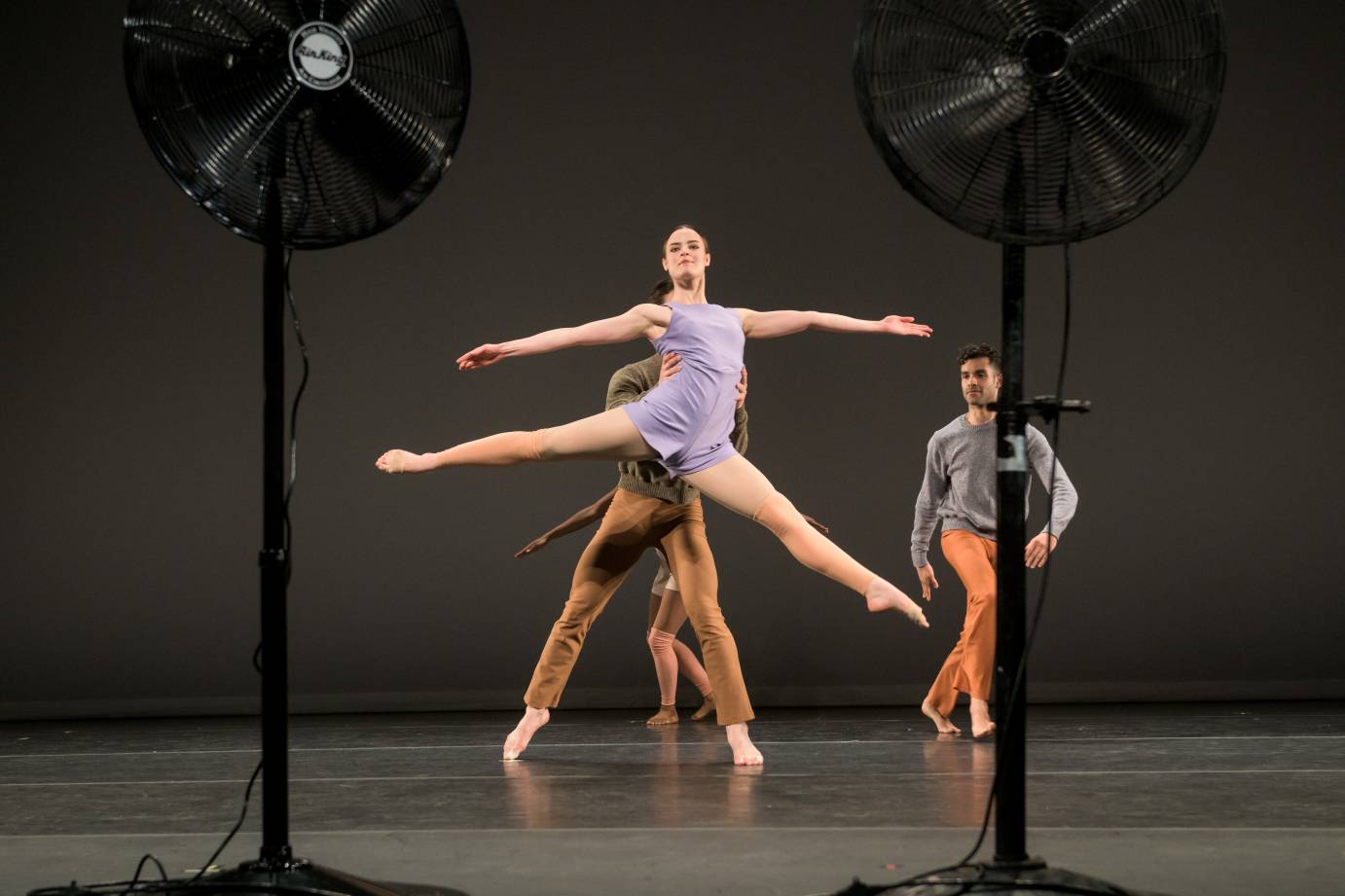
MARTHA GRAHAM DANCE COMPANY at THE JOYCE THEATER- APRIL 2-14th, 2019
About a 15-minute subway ride away from the Skirball, on the same days and times as Petronio’s concert, Martha Graham’s choreographies — from as early as 1936’s Chronicle to as late as 1962’s Secular Games— are being performed.
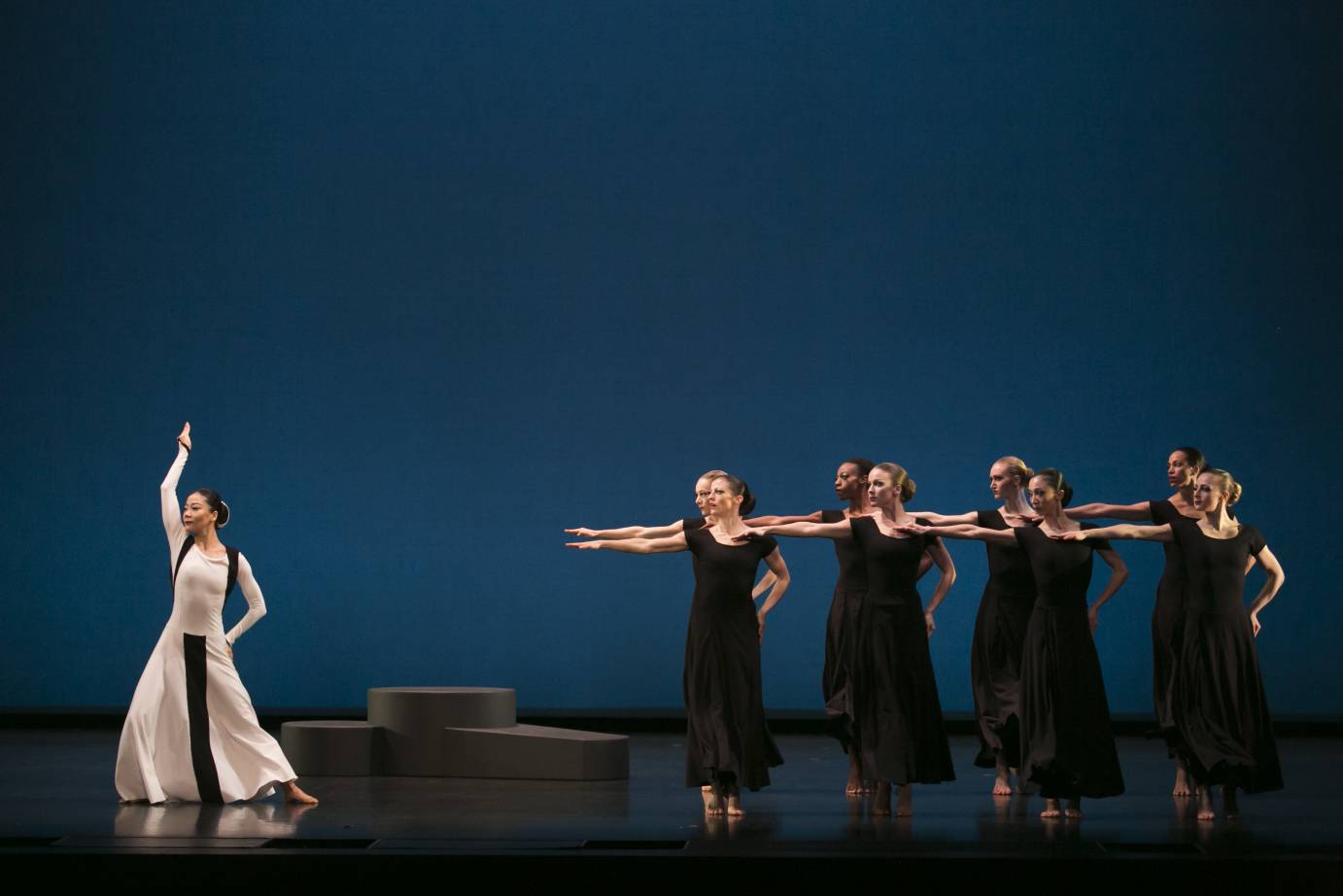
Journeying through the Graham Galaxy after visiting Cunningham (who once danced for her) in Petronio’s, the differences are striking. Here, dancers express inner passions exploding from their core with a kaleidoscope of emotions. The world is set for dramatic narrative, populated by characters from Greek mythology, Americana, literature, and religion. If dancers don’t embody a character per se, they enliven a theme: for example, Red Love, in Diversion of Angels (1948). By the way, any story that traditionally cast a male figure as its center re-emerges as a tale whose star is WOMAN (and why not?)
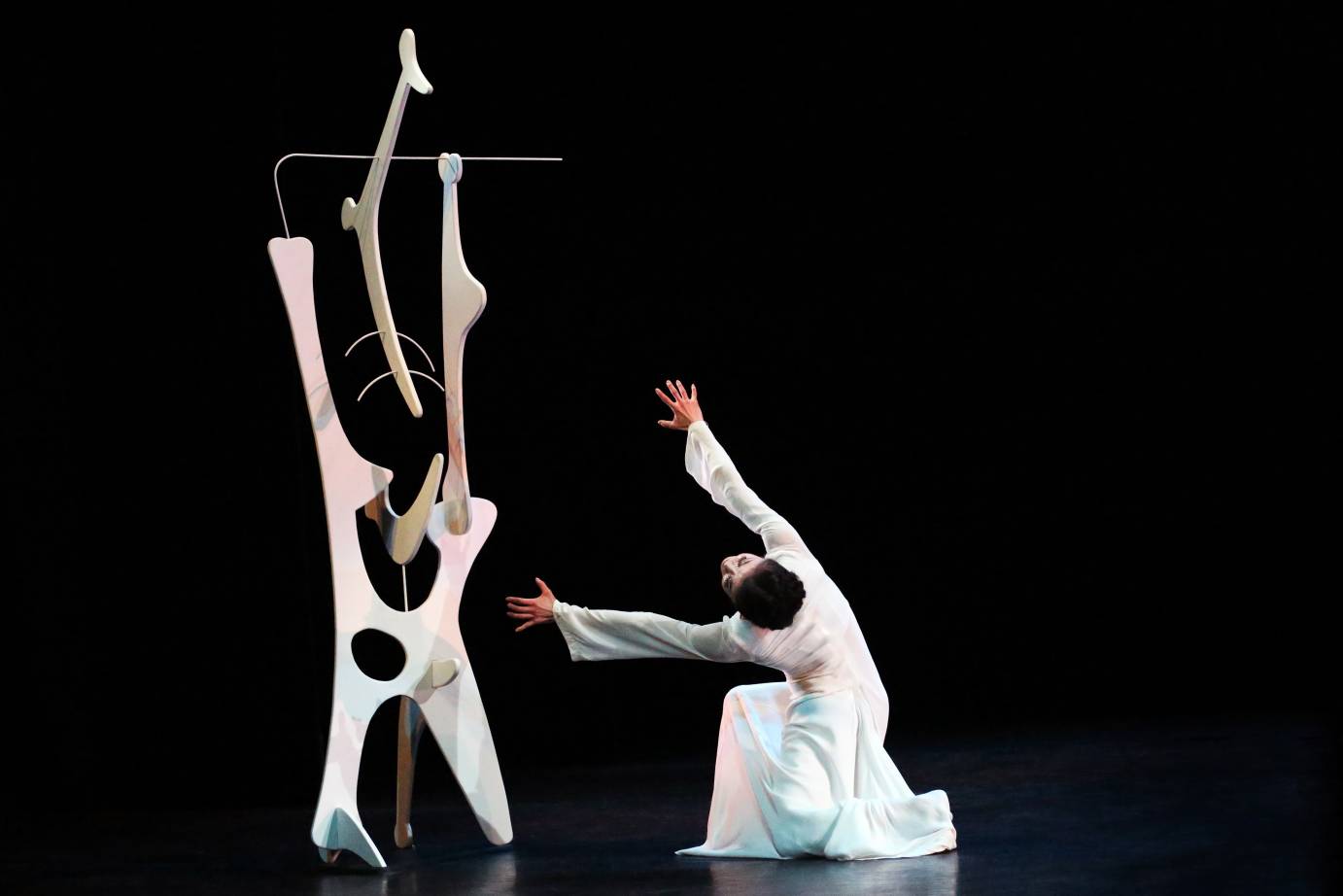
The concrete nature and symbolism of the classic Graham works connect us to universal ideas and passions. As distant as the Minotaur in Errand into the Maze (1947) might be from popular culture, we still identify with feeling trapped by monstrous forces. Understanding that struggle, we root for the heroine to escape her labyrinth and conquer the beast.
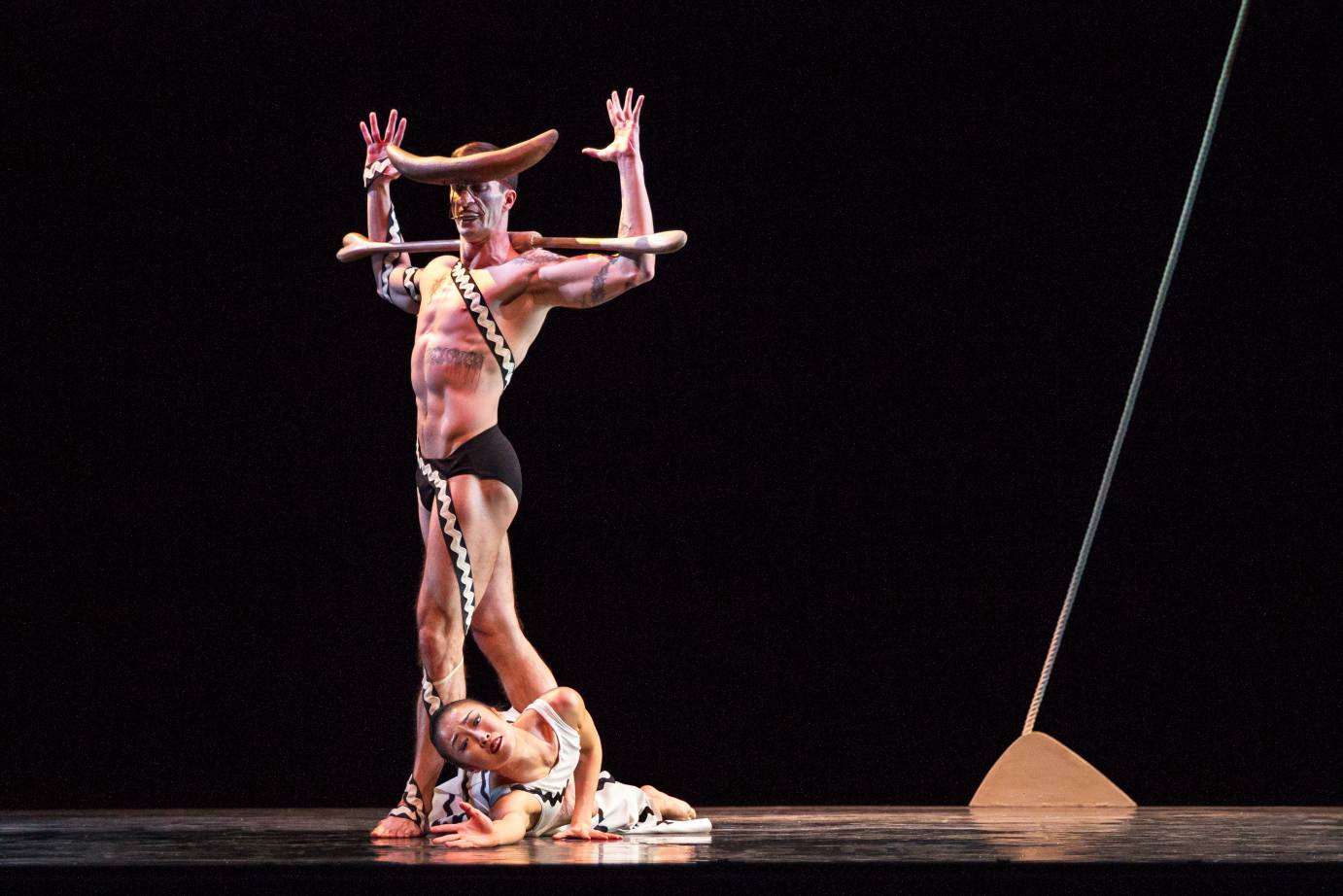
PeiJu Chien-Pott and Ben Schultz in Martha Graham’s Errand into the Maze photo by Brigid Pierce.
Because Graham technique emanates from the gut, we feel it in ours. When danced by emotionally and physically invested artists, we discover new layers to savor. PeiJu Chien-Pott, Xin Ying, and Charlotte Landreau as the female Theseus, with Ben Schultz and Lloyd Mayor as the Minotaur, transport us with electric performances of Errand. Chien-Pott, Ying, Natasha Diamond-Walker, and Anne Souder give striking interpretations in Hérodiade (1944.) The Martha Graham Dance Company of 2019 looks in tip-top form, every single one of them. These people make dancing through time a most excellent voyage.
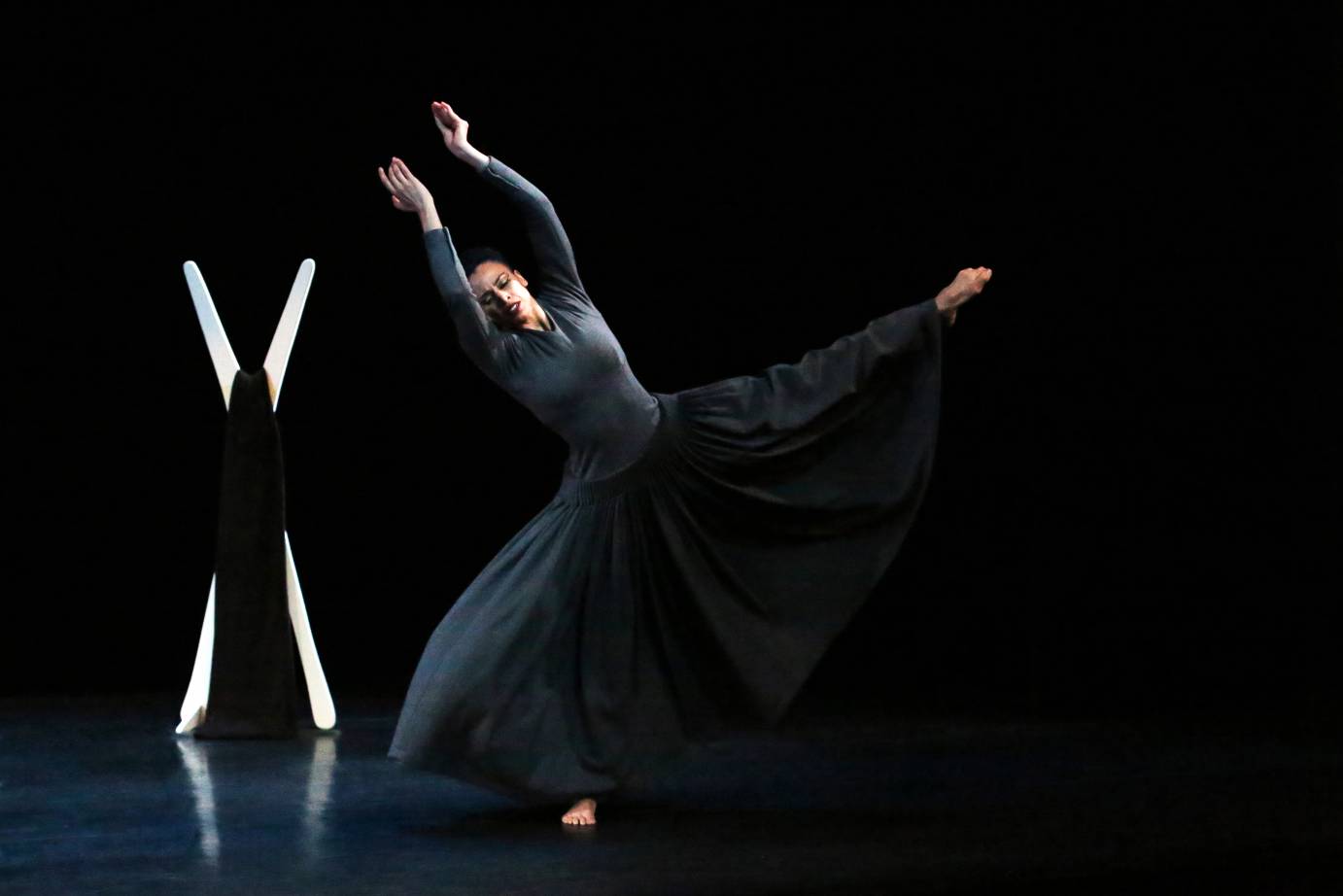
COVERAGE (1970) choreographed and sound designed by Rudy Perez is COVERAGE REVISITED (2019)
Far from the woman-powered Graham space, Rudy Perez’s Coverage (presented as Coverage Revisited. Perez, thankfully still alive,could revisit his work) poignantly explores notions of masculinity. Created the year after the Stonewall Riots, which heralded the beginning of the Gay Liberation Movement (only blocks away from where we sit), this solo reaches out to us through time, viscerally, with nary a contraction to be seen.
A construction worker strikes poses, every move — held, square, clean — registers male, at least a stereotype of “male.” Ernesto Breton, with impressive presence, postures to a collage of sounds of the day. I hear calls to protests, something about a march on Union Square … He tapes off a square area on the stage and walks in it.

Inside this boundary, Breton strips off his hard hat and jumpsuit to reveal a different working man, a graceful dancer in short shorts; his headgear, a bandana; his legs, long and lean, making a perfect fifth position.
Within the tape, play, pliability, gorgeousness, and complex selves can be embraced; outside, not so much. As Kate Smith, belts out “God Bless America,” Perez’s worker hides himself once again in his stiff uniform, his hard hat placed patriotically over his crotch.
MARTHA REVISITED 2019
Where Petronio introduces us to the vanguard of post-modern dance, Janet Eilber, MGDC’s visionary, shares fresh perspectives on Graham, classical modern dance’s mother. On the tails of the women’s marches of 2017 and ’18, amid world discussions of feminism for the 21st century, we are asked to consider Graham as a voice of female strength, a beacon of inspiration for the ages alongside, Eleanor Roosevelt, Gloria Steinem, Maya Angelou, and the like.
To keep our eyes open to the past’s reverberations in the present, Eilber asks leading contemporary choreographers, to converse with the wealth of Graham’s legacy. This year Bobbi Jene Smith with Maxine Doyle and Pam Tanowitz shared their takes.
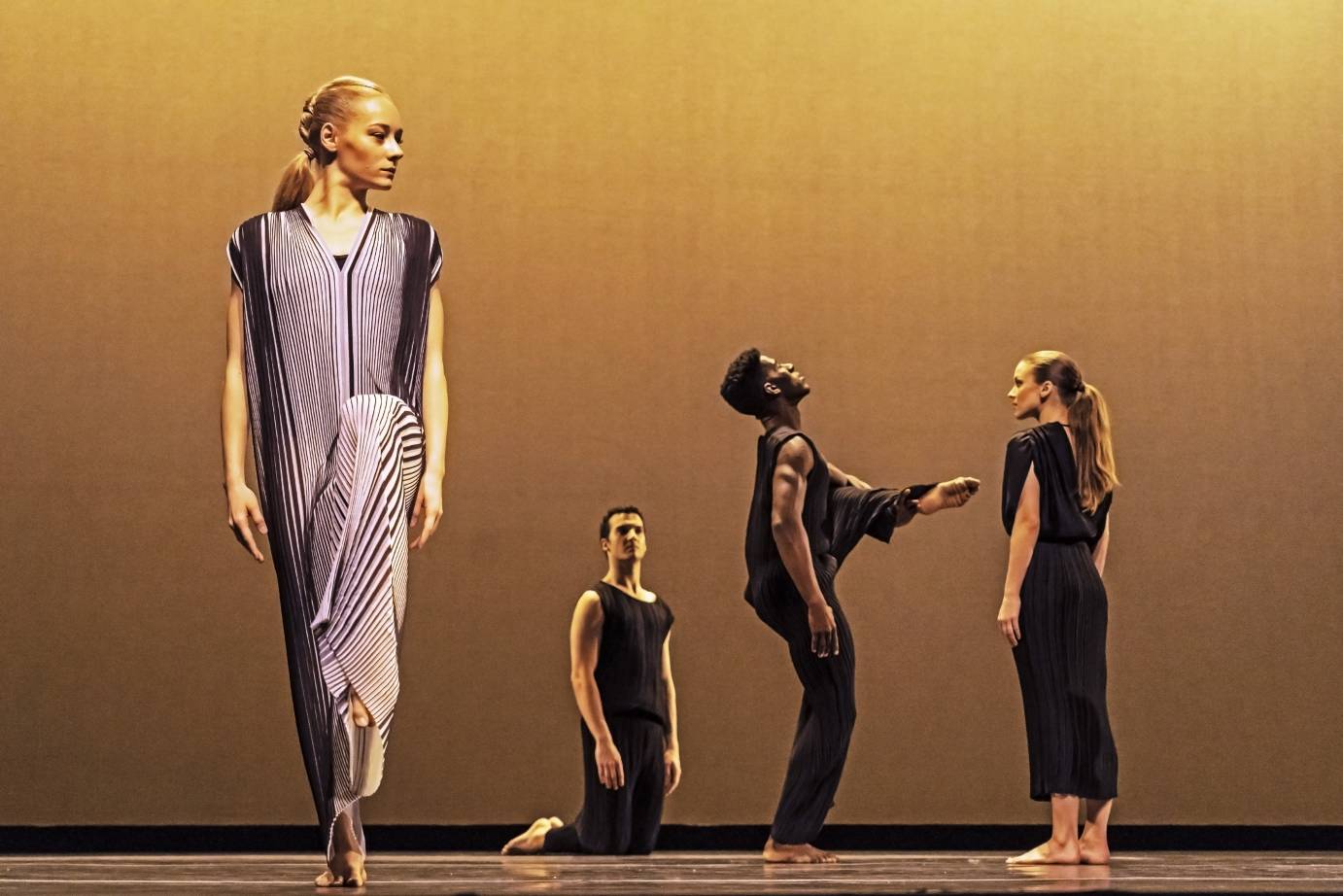
Tanowitz’s Untitled (Souvenir) deconstructs Graham vocabulary, picking up her movements, like shells on the beach and turning them round and about to examine. I’m still deciding how to feel about this treatment. It seems to me the best new commissions presented by America’s oldest working modern dance company, bring myth and drama out to play in some way. La Madre seems to demand it.
WANDERING IN DANCE SPACE APRIL 2019
This month’s historic picture of a black hole is not an end to itself, but the beginning of more inquiry. The discovery reminds us of the vast and mysterious nature of the cosmos. And, if we are open to it, we’re challenged to escape our everyday survival dance and think differently.
Where will the black hole study lead? Do you realize that some physicists believe we are holograms projected from data existing on the boundary of a distant black hole? I’m not joking.
Wrap your head around that.
To my mind the most compelling dance works, like the most exciting scientific discoveries, are gateways of sorts, presenting us with material that opens us to possibility. Through the work of the dancers, choreographers, and their collaborators — artistic scientists — we’re set free to imagine.
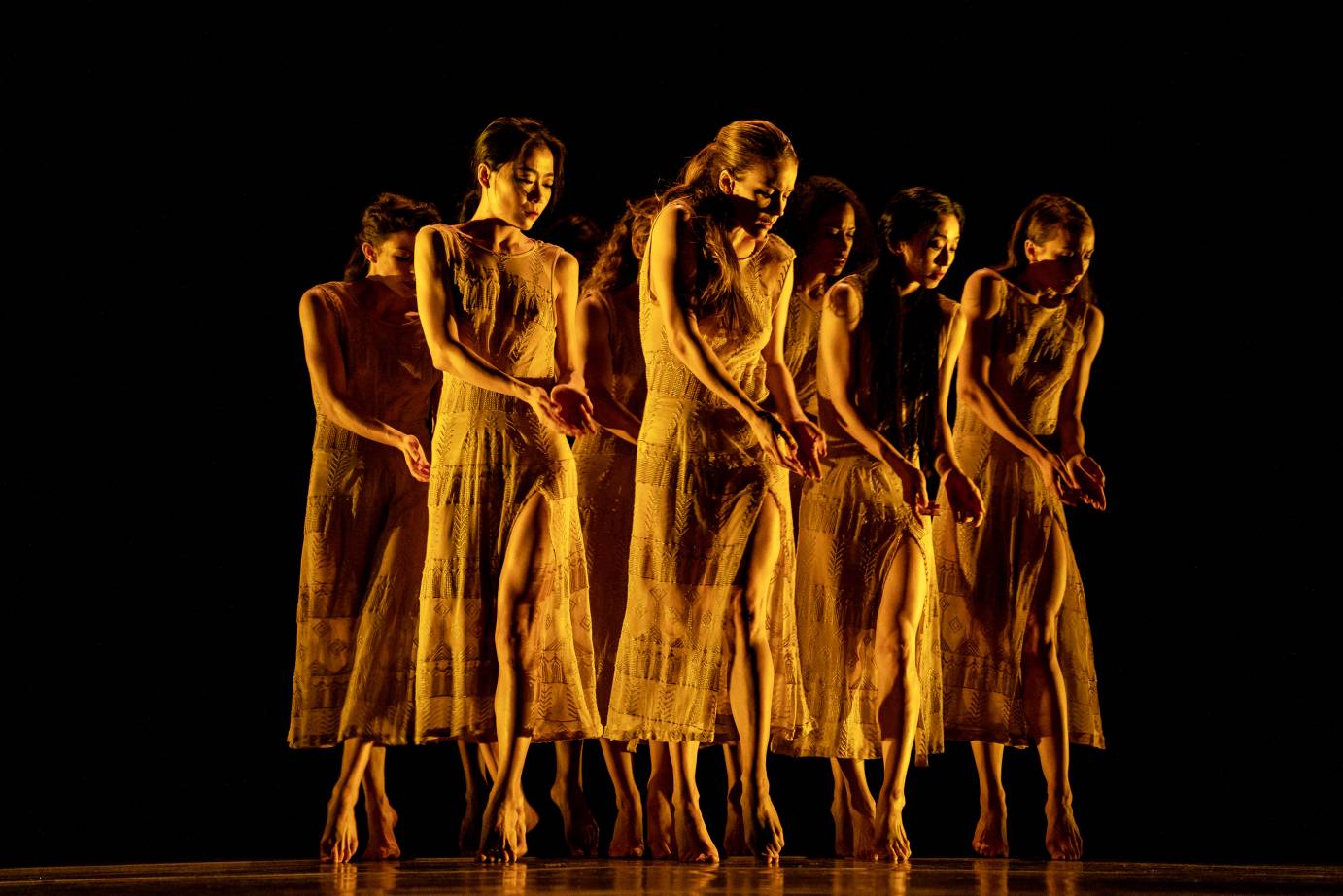
DEO choreographed by Bobbi Jene Smith and Maxine Doyle 2019
In Deo, the myth of the mother-daughter duo, Demeter, goddess the harvest, and Persephone, her child (stolen into the underworld, only to return to earth once a year and herald spring), is exceptionally presented as a choral work for women.
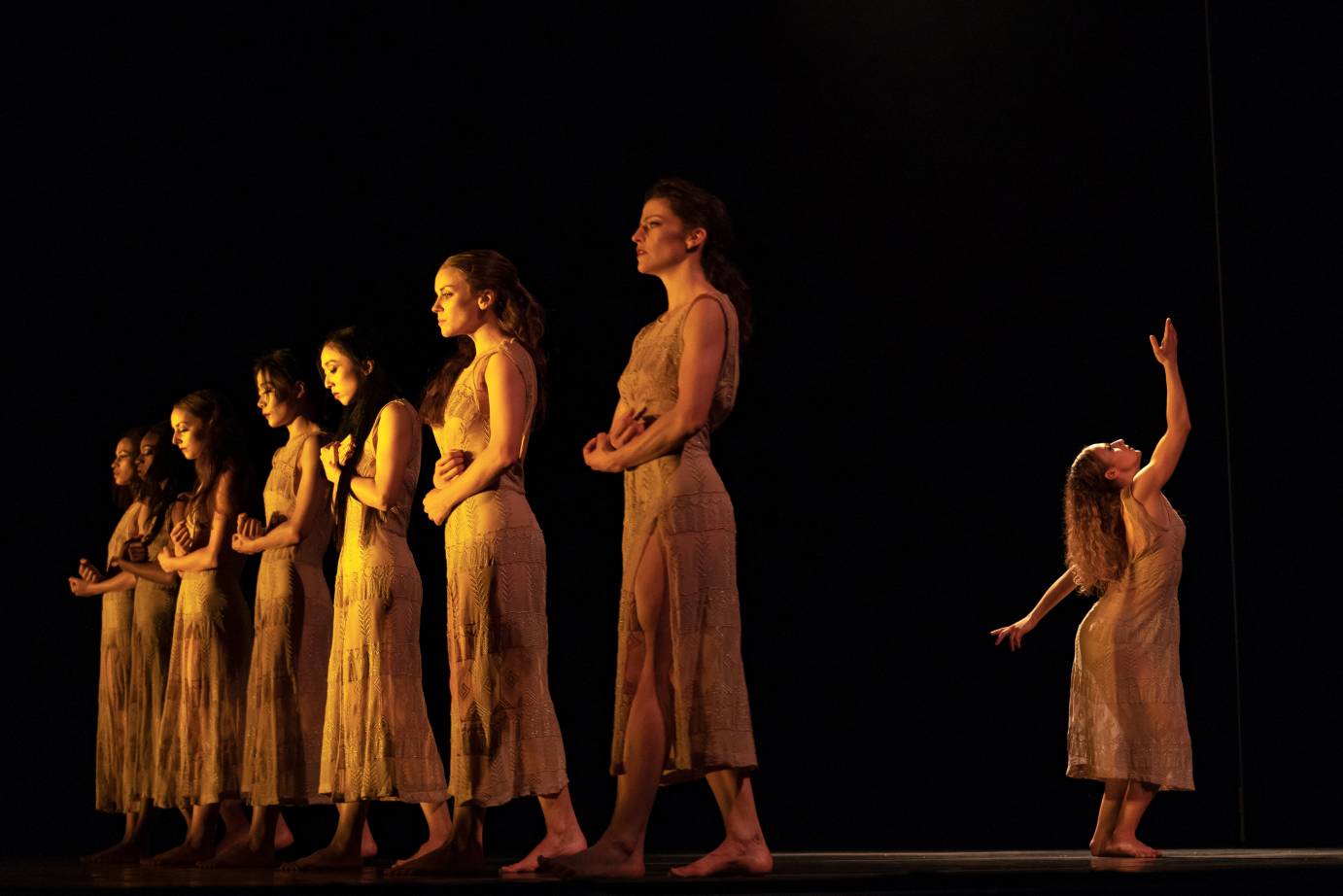
Unlike the clear-cut, well-lit Graham characters, the women of Deo move in an atmosphere of foggy antiquity. Light washes over them, transporting them to different locales. As an apparition might travel and change shape instantly, so does the collective. New leaders magically emerge in each formation as the group mutates. Who is the mother? Who is the daughter? Where are we being taken? Perhaps Demeter and Persephone are in all women — woman, at once mother and child.
The coiling, uncoiling pelvis of Graham work here ripples outward toward the earth, mimicking birth. The movement, not as sharp as Graham’s, repeats and builds. Streams become waves of roiling energy, then subside. The cascades and repetition suggest an infinite cycle.
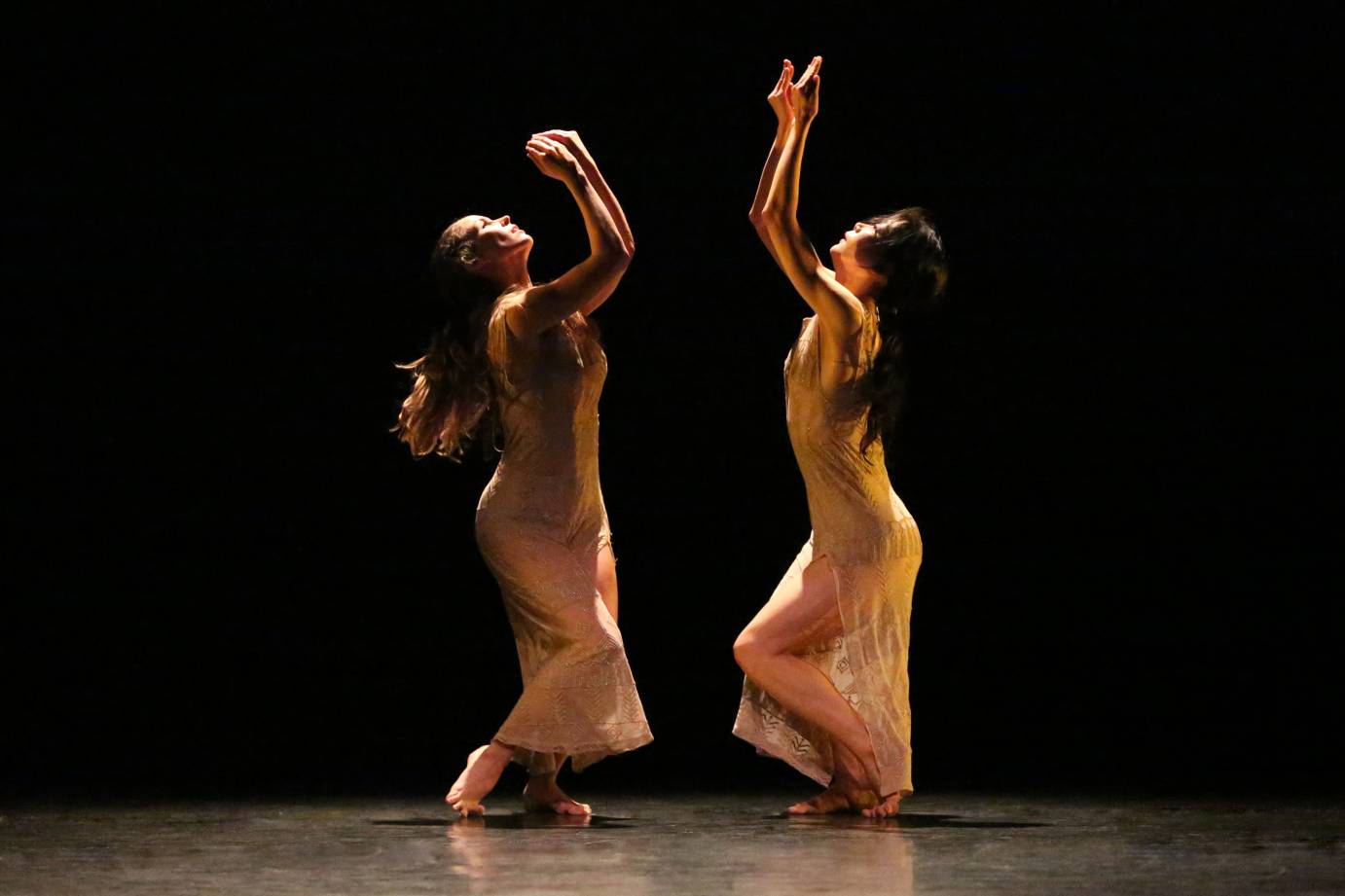
Just before the piece concludes, we are introduced to two women who play with each other in a quick mirroring dance. Could they be Demeter and Persephone enjoying a bit of fun before time moves on and their season is over? Smith and Doyle keep us wondering.
AMERICAN LANDSCAPES choreographed by Steven Petronio 2019
Petronio’s American Landscapes marries the best of what we’ve seen in the works by his influencers with his bold artistic sensibility. Like Cunningham, he respects and wonders at the human form moving in a moving universe. His dancers rivet us with their clear and consummately beautiful steps in space.
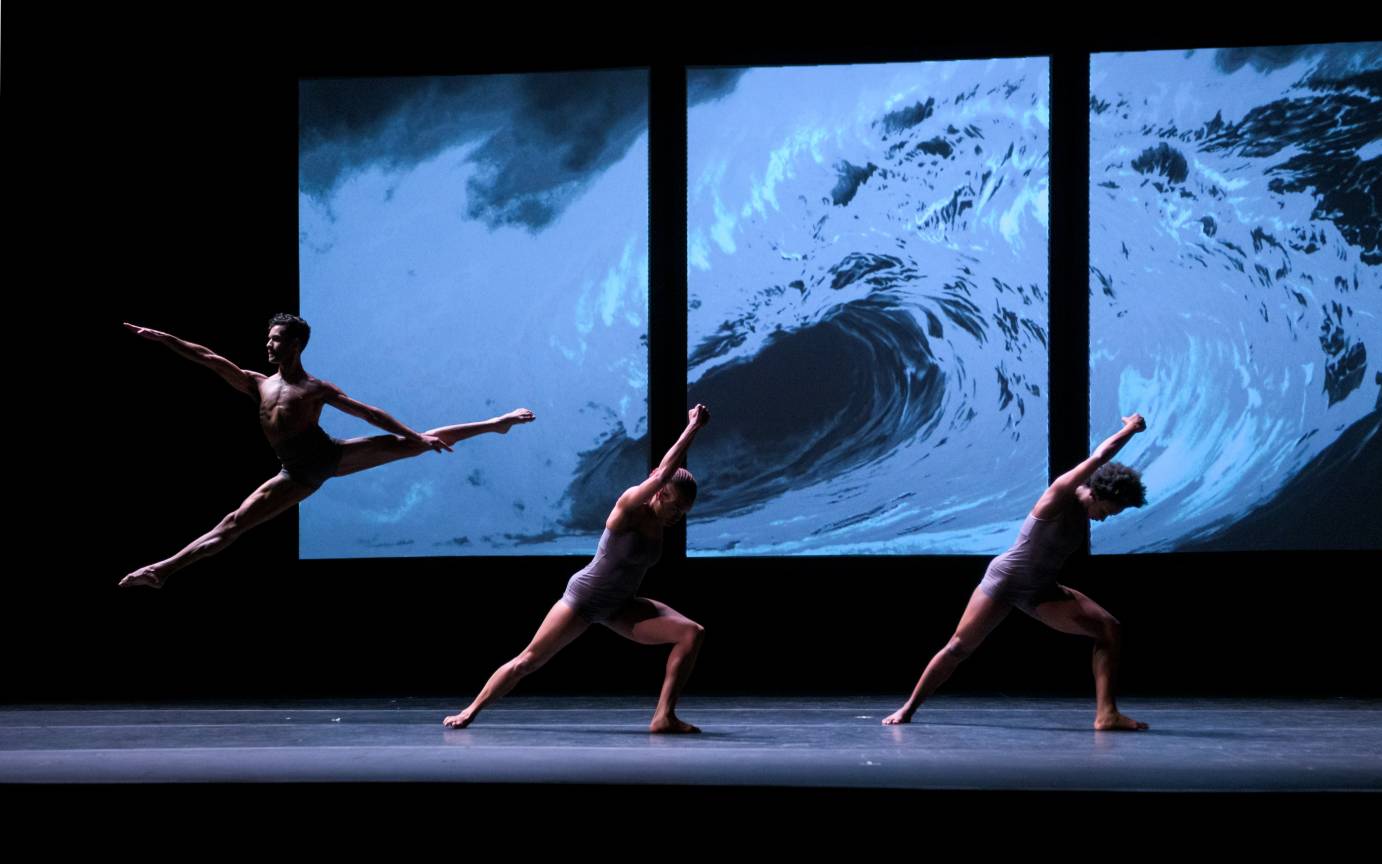
In the past, I’ve considered this group relentless — surprising us with physical prowess and inventiveness, while ripping into the environment around them. This year the approach is gentler, and the movement, still astounding, flows. Wondrous projected images by Robert Longo meld hypnotically with the dancers and the music of Jozef Van Weisen and Jim Jarmusch.
Even the beginning of American Landscapes is gentle, starting as an easy social dance between Petronio and his former colleague Martha Eddy. Wearing jumpsuits, looking as if they are ready to parachute off somewhere together (but will enjoy each other’s company first), they glide, sashay, and chat on stage as the audience walks into the theater after intermission.
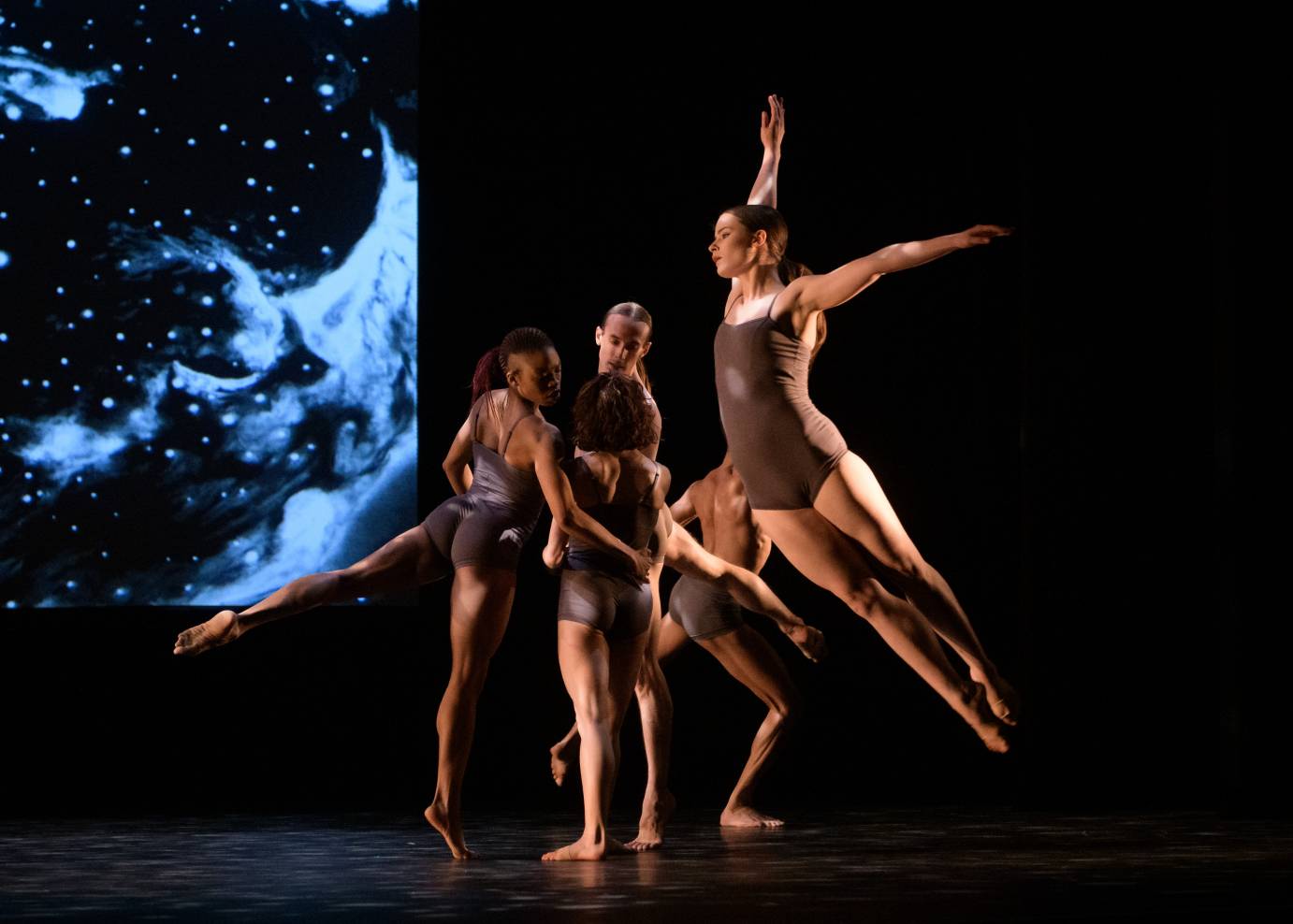
American Landscapes may be a political dance, but unlike politics, there is no brain-deadening chatter, preaching, or shouting. Petronio isn’t a pundit ready to bat us over the head with ideology. Even as we take in timely projected images of airplanes over skyscrapers, a football player on his knees, and a woman in a pussy hat, they are but smaller aspects of the full canvas. More profound and frequent are the enveloping pictures of the natural world and space all around us, encouraging us to think bigger and beyond. As the pictures, music, and dancers merge, we too become part of the movement, in meditation. Petronio reminds us, not who we are in the American landscape, but who we can be.






